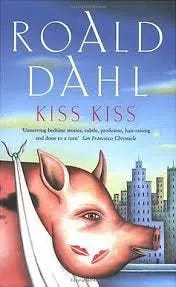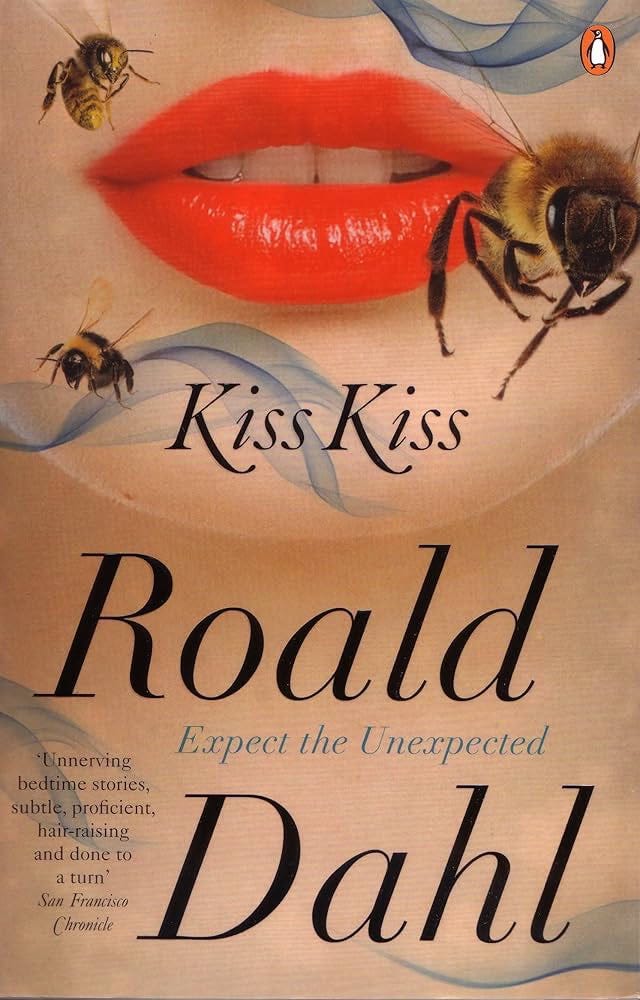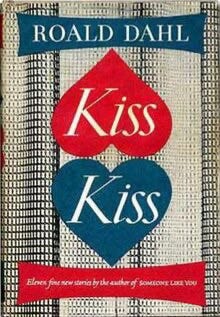By request. My seventh-grader read “The Landlady” in English class recently and asked me to read and write about it so we could compare notes. So this one’s for him.
Roald Dahl was a nasty piece of work. The antisemitism. The misogyny. The treatment of his first wife, Patricia Neal.1 And yet. The streak of cruelty that made him so miserable to work and live with invigorates his books, making them the bestsellers they continue to be to this day.
Even (especially) in his children’s books, there is a pronounced darkness, darker and creepier than any other books for young children I can think of. That darkness helps illuminate the light. In The Witches, the head witch’s ghastliness is exciting because it is balanced by the loving relationship between the young boy and his grandmother. Without the safety net of the grandmother, the horror would be too real: “She was my mother’s mother and I absolutely adored her. When she and I were together we spoke in either Norwegian or in English. It didn’t matter which. We were equally fluent in both languages, and I have to admit that I felt closer to her than to my mother.” A good thing, since his both of his parents are killed off in the next paragraph. There is good in Dahl’s world, but never sentimentality.
That sense of balance is why the kind and beloved teacher, Miss Honey, must go up against the evil headmistress, The Trunchbull, in Matilda and why George essentially poisons his mean grandmother in George’s Marvelous Medicine, exacting delicious revenge. It’s the found family of insects that adopts James when he escapes from his wicked aunts in James and the Giant Peach. (Dahl’s bad guys are almost always bad women. Set aside the baked-in misogyny and you have to admit, he created some terrific villains.)
The style of Dahl’s children’s books is often imitated, but never duplicated. What Dahl gets, in a way that other children’s book writers simply do not, is how delightful it is to be a child reading his books. Kids know that life is unfair, that grownups can be cruel, that bad people often have all of the power. By (hilariously) acknowledging that imbalance and correcting it in outlandishly over-the-top ways, Dahl’s books speak to children’s desires in a way that simple morality tales of good versus evil do not.
The darkness is also tempered by a raucous sense of humor that seems designed to appeal to children. The language, full of made up words, is playful even while the story structure quite is quite rigorous. That playful narrative voice contrasted with the darkness of the story is evident in his strongest short stories for adults as well. What’s absent is the sense of safety, that things will come out alright in the end.
“The Landlady,” written in 1959 and originally published in “The New Yorker,” is neither Golden Age nor a detective story. It’s closer to horror, but who am I to deny a direct request from my son (make no mistake: he may have asked for this newsletter, but he will not read it)? It is a brief tale, simply told. A young man arrives in Bath for a new job. On his way to find a hotel he sees a sign for a bed and breakfast. Something draws him in; indeed, it seems he was expected. He signs the guestbook while the landlady serves him tea. Upon signing he notices that her only previous tenants were two young men whose names sound familiar. While he tries to place where he’s heard their names before, he realizes that the pet parrot and dog are both taxidermies, and that his tea tastes of bitter almonds…
There is certainly no escaping the darkness here. Dahl starts out conventionally, with Billy’s introduction to Bath and to us. “He was wearing a new navy-blue overcoat, a new brown trilby hat, and a new brown suit, and he was feeling fine. He walked briskly down the street.”
But things quickly take a turn away from the norm. The house itself seems to exert a pull on him:
He was in the act of stepping back and turning away from the window when all at once his eye was caught and held in the most peculiar manner by the small notice that was there. BED AND BREAKFAST, it said. BED AND BREAKFAST, BED AND BREAKFAST, BED AND BREAKFAST. Each word was like a large black eye staring at him through the glass, holding him, compelling him, forcing him to stay where he was and not to walk away from that house, and the next thing he knew, he was actually moving across from the window to the front door of the house, climbing the steps that led up to it, and reaching for the bell.
Once inside, things take a turn for the macabre, but it takes poor Billy an infuriatingly long time to catch on, the matter-of-factness of the tone contrasting with our growing concern for Billy’s life expectancy. As David L. Ulin wrote in “The New Yorker,” “… Dahl comes off as more knowing, or perhaps more winking, as if he and we, a writer and his readers, were in cahoots together. For him, the act of storytelling, at its heart, is a collaborative game.”
It is that shared knowledge - we know where this story is going, so much so that Dahl ends on a cliffhanger, not bothering to elucidate Billy’s fate - that creates the sense of enjoyment. Billy may not know what awaits him, but Dahl ensures that we do. After all, we’re not kids anymore.
Further reading: Dahl wrote two autobiographies, Boy: Tales of Childhood and Going Solo that detail his fascinating life, from his tragedy-filled childhood to his exploits in WWII. Roald Dahl: Teller of the Unexpected, a biography by Matthew Dennison, came out in 2023. Here’s a helpful primer on the most recent Dahl controversy.
What do we do with all of this? I honestly don’t know. Can we separate the art from the artist? If we say no and draw a hard line, we’d be stuck watching nothing but Tom Hanks movies for the rest of our lives. On the other hand, I’ve no interest in watching a Woody Allen or Roman Polanski movie ever again, so I guess we all have a personal line that we draw somewhere. I can still read Dahl’s books and stories without thinking about the man who wrote them, though I do so with a more critical eye than before.









